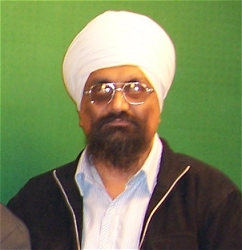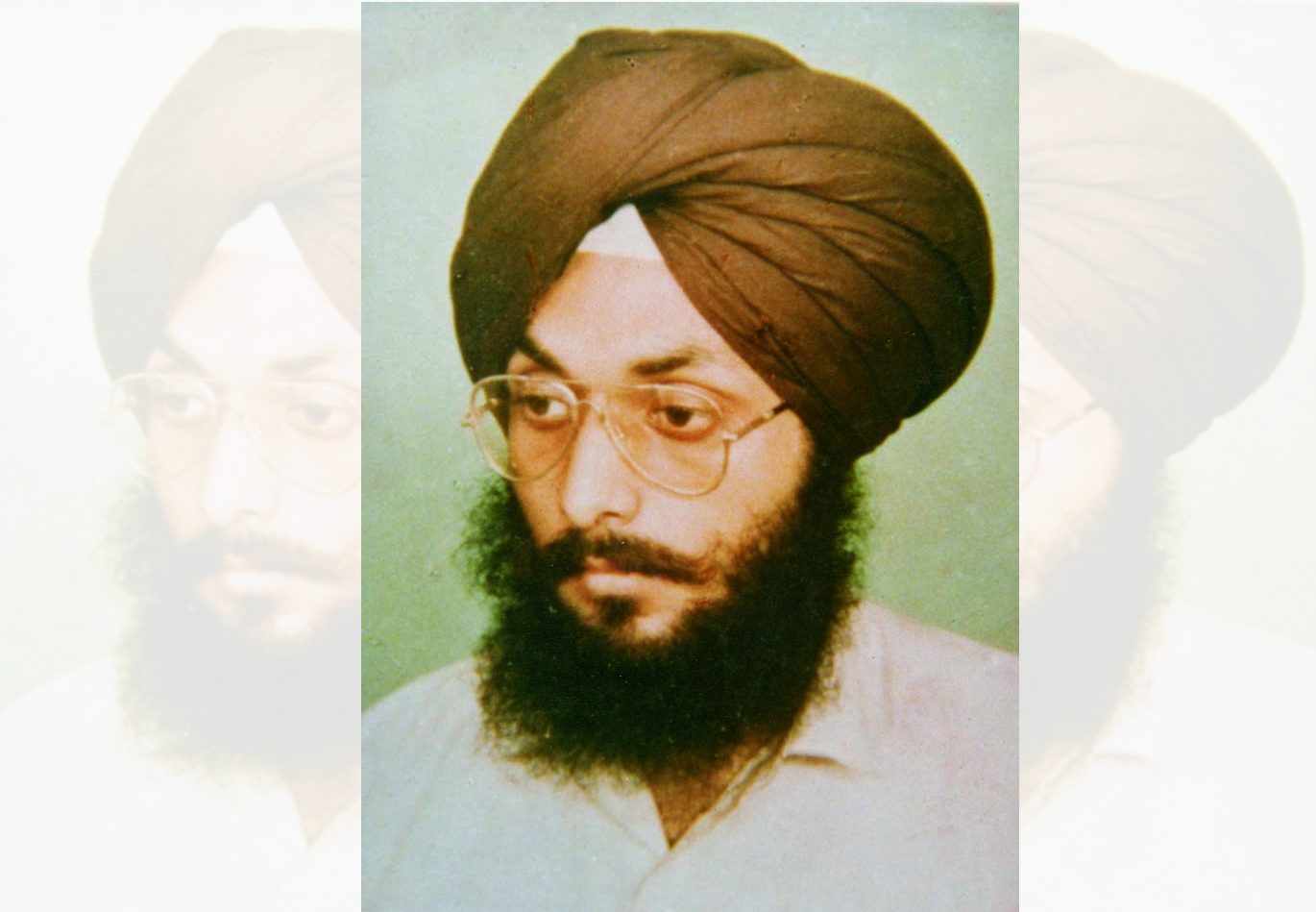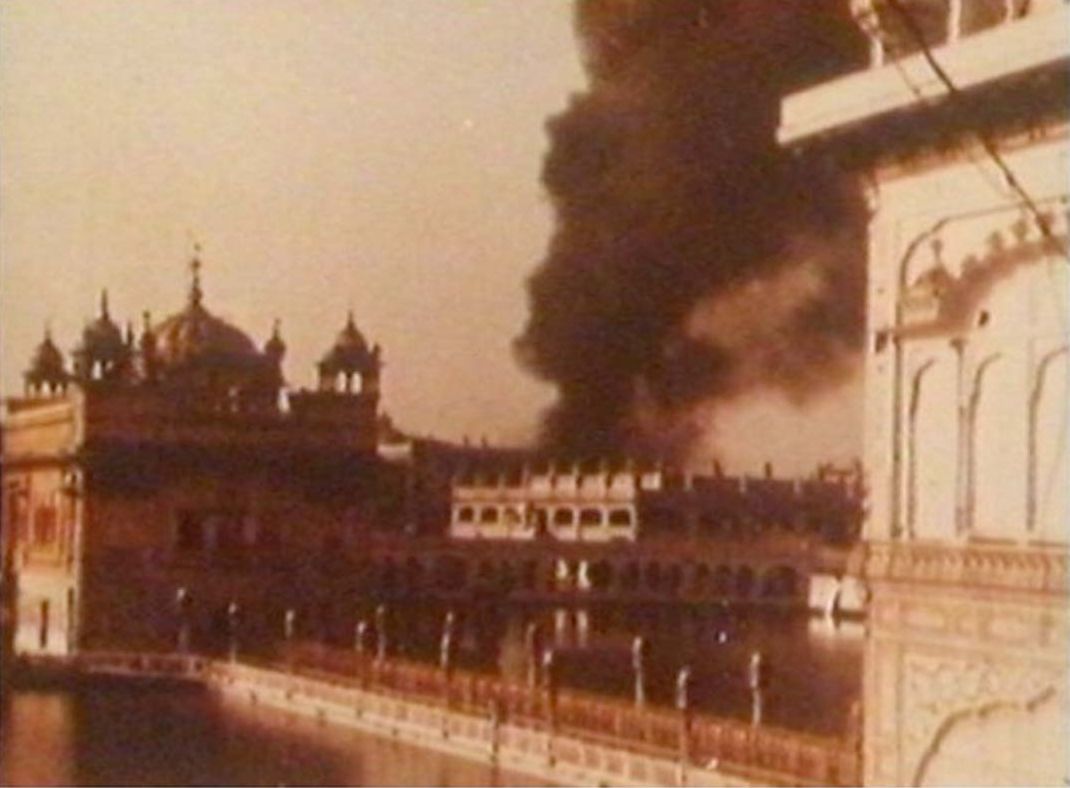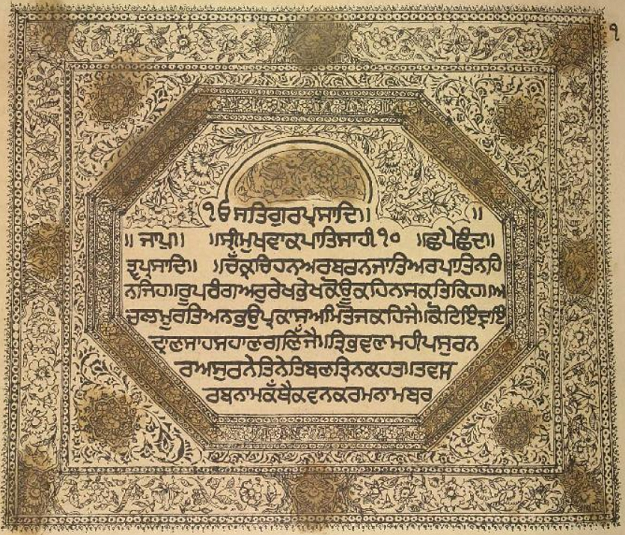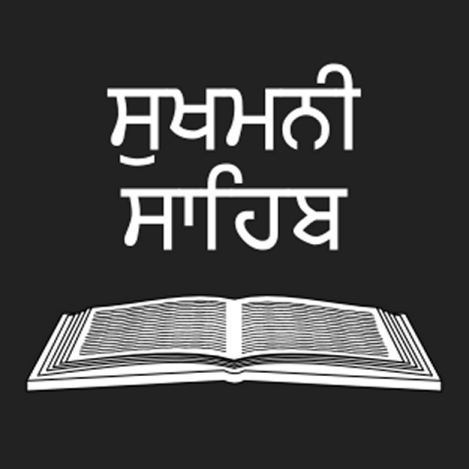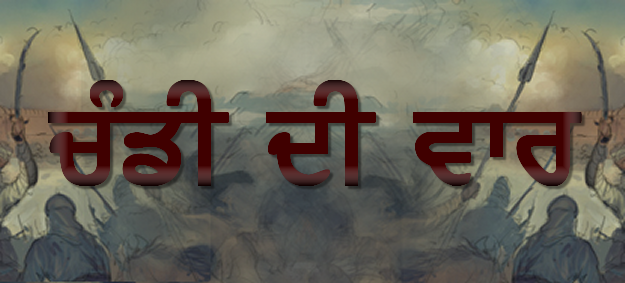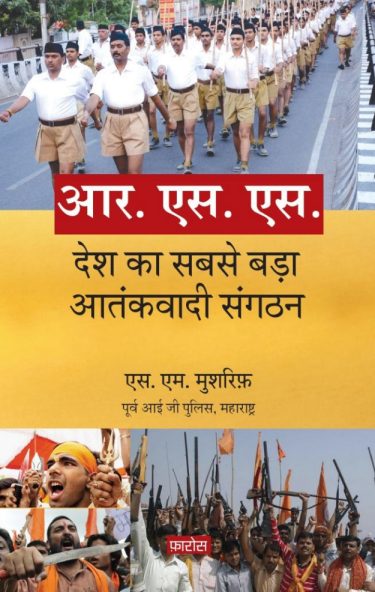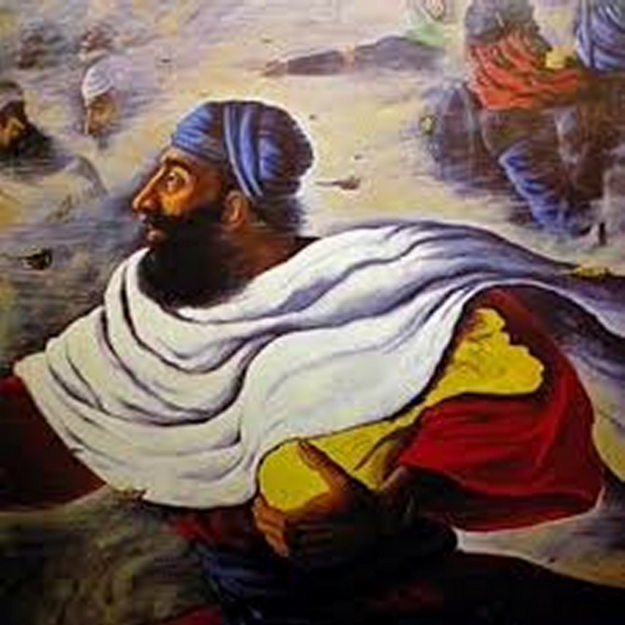
It is said that whenever any of the Rajput fort was about to be captured, all women would commit themselves to sati (burn themselves in fire), in order to protect their honor. Although, GurSikh women faced a similar situation, they did not choose sati as a way out. Why not? They had partaken Guru’s amrit. They were daughters of Kalgidhar patshah. They were lionesses. Why would they submit to sati? Why wouldn’t they challenge the enemy and die fighting in the battlefield? The remaining GurSikh men asked them, "sisters the delicate time is upon us. What should we do? We aren’t worried of our death? What we are worried about is your honor. The deceitful enemy could dishonor you all after our death."
Dalaer Kaur, Jathedar of GurSikh women, responded "Brothers, the amrit of Kalgidhar Patshah that you all have partaken is the same amrit that we have partaken. No force of this world can dishonor us. We shall accept martyrdom fighting the enemy of truth before you all."
Gursikh Women Martyrs of the Battle of Anandpur Sahib
Enclosing Anandpur in a Fort, Guru Gobind Singh Ji Maharaj initiated the battle for freedom and sovereignty. The biting sound of his "Ranjit Nagara," a large kettle drum, shook up and instilled fear among the neighboring Hill Rajas. They had started considering Kalgidhar Patshah as their arch enemy and deployed several strategies to get him to leave Anandpur. The Rajas of the 22 mountain ridges (BaiDhar) consolidated themselves against Guru Maharaj, blew the trumpets of war and initiated regular attacks against Anandpur Sahib. However, the courageous GurSikhs warriors, under the command of our Tenth Guru, displayed such martial skills in the battlefield that the enemy was forced to retreat with sustained heavy losses and severe damages in every attack. Irritated by the almost daily defeats with heavy losses, the Hill Rajas approached Delhi and sought Aurangzeb’s help. The rationale provided by the Hill Rajas against Guru Maharaj was that "if the rising tide of Sikh movement isn’t suppressed at this stage, it will destroy the Mughal empire." Aurangzeb’s contempt for Sikhs was well known. He was independently searching for an opportune moment to destroy the Sikhs. And now the pleas of Hill Rajas provided him an excellent opportunity. Thus Aurangzeb eagerly issued orders for the Royal forces to attack Anandpur.
At this moment, Guru Gobind Singh Ji was accompanied by ten thousand brave GurSikh men and some 100 GurSikh women inside the Anandpur Fort. The royal forces arrived suddenly and seized Anandpur. The invading forces not only comprised of the Royal forces from Delhi, but were joined by the forces of Wajir Khan, Suba Sirhind, and Jabardast Khan, Lahore, along the way. Upon their arrival in Anandpur, even the hill rats had come out of their hiding places to help the invading forces. Altogether, the little fort of Anandpur Sahib was facing a force of 10 lakh (a million) strong. The enemy immediately seized the surrounding area and were now ruthlessly advancing in attempts to capture the fort.
On the other side, GurSikhs warriors prepared themselves at the sound of "Ranjit Nagara" and came out to defend and arrest the invading forces from reaching the fort. A fierce battle ensued and the GurSikhs fought courageously to check the enemy advanced. Many gave their lives in the fort’s defense and thereby enrolled among the ranks of martyrs in defence of righteousness. While our GurSikh brothers were fighting the fierce battle, GurSikh sisters were engrossed in nursing the wounded, managing the supply lines, and organizing the Langar.
At the time of the attack the invading forces were extremely confident of their strength. They were certain that the thousand odd GurSikhs wouldn’t last beyond a day, especially in face of 10 lakh (a million) strong forces with canyons and heavy armors. However, the enemy sensed the error of their judgement, during the first day of the battle. And quickly realized that capturing Anandpur fort wouldn’t be as easy as they had thought. Having suffered heavy causalities, the invading forces retreated and imposed curfew on the surrounding area. Their seize of the area was so tight that nothing could move in or out of Anandpur. All supply lines to the fort were cut of. Now they adopted a strategy to simply waited for the GurSikhs to deplete their supplies and come out. This situation went on for nine months without any movement on either side.
By now, the situation was grim on both sides. Ration and water had virtually depleted inside the Anandpur fort. Nothing could be brought in from outside as all supply line had been severed. On the opposing side, the invading forces had become targets of various diseases because of the ensuing floods. Their soldiers were dying in large numbers, causing major havoc and desertions among the ranks. The enemy had lost all hope of ever capturing the Anandpur fort. Yet, their own strategy and the situation demanded them to stay engaged. While they wanted to abandon the seize of Anandpur, their pride wouldn’t allow them to do so. Comparatively, the situation among invading forces was deteriorating more rapidly than among GurSikhs.
Finally, all military tactics of the invading forces proved ineffective against the defence of GurSikhs inside Anandpur fort. The invading forces had been totally humiliated and defeated. Now diplomatic strategies were explored to turn their defeat into a victory. Under this strategy, the Hill Rajas and Mughal forces, took sacred oath of Cow and Koran respectively, and asked Guru Sahib to leave Anandpur. They wanted Guru Maharaj to leave the Anandpur fort just once and then return anytime at will. The rationale being that this would allow the invading forces to safe face. However, Tenth Patshah was well aware of their hidden agenda and thus declined the offer. Subsequently, the request was resubmitted accompanied by an official letter of assurances signed by Aurangzeb himself. By now the situation inside the fort had further deteriorated. GurSikhs of Majha had already given their "Baedhawa," petition of disassociation with Guru Maharaj, and left the fort. The remaining GurSikhs were increasingly exhausted and wearied because of hunger. At this critical moment, under advice of Matta Gujari and some prominent GurSikhs, decision to leave the Anandpur fort was announced. Guru Maharaj, along with 500 GurSikhs and family members left the Anandpur fort during the bitter December-January winter freeze. Since the seize of Anandpur fort was to be shortly lifted, as per the agreement, a hundred GurSikhs women and about 10 GurSikh men stayed behind.
As soon Kalgidhar Patshah left the fort, the combined forces of mughal and Hill Rajas quickly abandoned their sacred oaths. And contrary to the agreement, they pursued Guru Sahib’s party. Finally, they caught up with and attacked Guru Sahib on the banks of Sirsa river. In this battle many GurSikhs were killed and Guru Sahib’s family scattered. Younger Sahibjadas (sons) and Matta Gujari left with the deceitful Gangu to his village. While Bhai Mani Singh along with Guru Sahib’s wife left for Delhi. Guru Sahib left for Chamkaur with the remaining 40 GurSikhs and elder Sahibjadas. At Chamkaur, once again Guru Sahib had to face the enemy forces in large numbers. All 40 GurSikhs, along with the elder Sahibjadas, accepted martyrdom in this battle. And Guru Sahib left for Mashiwadha while challenging the enemy forces. Readers must be familiar with the subsequent events; especially, the martyrdom of younger Sahibjadas and Matta Gujari. I shall skip these details for brevity.
Instead, lets return to the Anandpur fort where the invading forces were awaiting Guru Sahib’s departure to start looting and destroying the fort. As soon as Guru Sahib left the fort, the greedy soldiers of the invading forces broke their ranks and proceeded towards the fort, burning and looting everything in their way. Now they seized the fort with Guru’s GurSikhs inside.
What a power of Guru’s amrit? The fort is seized by the enemy forces with no force inside to defend it. All there were a hundred women. Women, the fairer sex, popularly understood as weak and powerless by the world. However, these women neither considered themselves to be weak nor powerless. They echoed, "we too have partaken the amrit from our Kalgidhar father and the moment to prove it has come upon us." These daughters of lions picked up the guns, took up positions on the fort’s pillars, and started firing on the enemy soldiers.
The enemy soldiers had presumed the fort to be was empty. As such they were taken aback by this sudden rain of bullets. Soon piles of stacked dead enemy soldiers were visible outside the fort. Seeing this, the enemy soldiers left their position and ran for their lives. Now, no living enemy could be seen anymore, as everyone fled for their lives. The brave daughter of Guru made the enemy chew iron grams, their bullets. Witnessing the disastrous situation of his forces, the mughal commander got irritated and issued orders for canyon fire against the fort. Intense canyon fire succeeded in breaking through a wall of the fort. Now, once again, the enemy foot soldiers moved towards the fort. They were again showered with bullets by the Guru’s daughters. Hundreds of enemy soldiers again shut their eyes for ever. Unfortunately, by now the ammunition had depleted inside the fort. The enemy forces were rapidly advancing but there was no more firing coming from inside, in response. Fort’s capture was almost certain.
History reminds us of the Rajput women folks. It is said that whenever any of the Rajput fort was about to be captured, all women would commit themselves to sati (burn themselves in fire), in order to protect their honor. Although, GurSikh women faced a similar situation, they did not choose sati as a way out. Why not? They had partaken Guru’s amrit. They were daughters of Kalgidhar patshah. They were lionesses. Why would they submit to sati? Why wouldn’t they challenge the enemy and die fighting in the battlefield? The remaining GurSikh men asked them, "sisters the delicate time is upon us. What should we do? We aren’t worried of our death? What we are worried about is your honor. The deceitful enemy could dishonor you all after our death."
Dalaer Kaur, Jathedar of GurSikh women, responded "Brothers, the amrit of Kalgidhar Patshah that you all have partaken is the same amrit that we have partaken. No force of this world can dishonor us. We shall accept martyrdom fighting the enemy of truth before you all."
By now, the enemy was advancing so rapidly that there was no time for further debate. Upon Jathedar Dalaer Kaur’s signal, all GurSikh women drew their swords and moved behind the damaged wall. This was the only way for the enemy to enter the fort. Here they patiently awaited the enemy’s entrance.
Tears came to the GurSikh men, who still were worried about the fate of their sisters at the hands of the enemy. Jathedar Dalaer kaur noticed the predicament of her brothers and said "brothers do not worry about us. The enemy cannot enter the fort while we are alive."
At this moment the enemy had reached the fort and as expected, attempted to enter the fort through the damaged wall. Inside were 10 hungry GurSikh men and a hundred GurSikh women facing thousands of well bread Mughals and Pathans. In normal situation this was no match. But this was no ordinary situation. Guru’s amrit that could awakens the weakest, filled the GurSikhs with such power and spirit that the enemy couldn’t put a foot inside the fort. The enemy advance having reached the damaged wall was forcibly restrained just outside the fort.
Witnessing the events from a distance, the mughal commander yelled, "cowards, you are afraid of the princesses inside the fort. They are gifts for you and excellent hunts. Advance inside the fort, loot all the wealth and capture them as well." These words were so loud that they could be heard inside the fort. Jathedar Dalaer Kaur yelled back a fitting response, "Hunt or hunter? Cowards come and find out for yourself."
Dalaer Kaur’s challenging response simply cut off the commander’s challenge. The enemy soldiers had no will left to advance. Seeing this the commander was extremely aggravated. He gathered some of the best horsemen from his group, picked up all the courage he could muster, and advanced inside the fort. As soon as he entered the fort with his men, GurSikh sisters attacked them from every corner. Very quickly the enemy became target of GurSikh women’s swords and fell to the ground. The commander of the mughal forces was killed in this attack. While some GurSikh brothers and sisters also lost their lives. How many? It was difficult to determine.
The cries of the wounded echoed in the fort. Soon the enemy forces outside figured out what had transpired with their companions inside the fort. Now no one had the courage to advance towards the fort. The previous information that the enemy had, about only a few women inside the fort, seemed inaccurate at best. The enemy was increasingly frightened by now.
Now the deputy commander of the mughal forces gave orders to retreat. Simultaneously, he asking for intense canyon fire. The enemy canyons opened fire and continuously pounded on the fort. Already a wall had been damaged and weakened by previous pounding and with this recent canyon pounding it fell inside. Through the fallen wall, the inner compound was clearly visible. No living humans could be seen inside. The enemy by now was convinced that no one was left on this side of the fort. They advanced in huge numbers and reached inside the fort. Afraid for their lives they cautiously proceeding to look around. But there was nothing to be afraid of. They searched every inch of the fort but did not find anyone. Where did the remaining GurSikhs disappeared? Where were they? No one knew. The enemy couldn’t understand. The soldiers were still afraid, expecting sudden attacks at any moment from any direction.
After intense search, when no one could be found inside the fort, the enemy concluded that the remaining GurSikhs must have escaped through some secret passage. Orders were given for abandon the search and initiate looting. The very soldiers who were afraid for their lives until now, anxiously started searching for wealth inside the fort. In the process they moved the fallen wall of the fort. What they found was no wealth but the bodies of our martyrs. The faces of Kalgidhar’s daughter were still radiant yet peaceful as they slept in their permanent sleep. It seemed as if they were resting after having successfully fulfilled their obligations. Rightly so, they had stood by their Jathedar and taken the stance that while living they shall not allow the enemy to enter the fort. They had fulfilled their promise. Guru’s amrit was successful while they joined the ranks of GurSikh martyrs. Then why wouldn’t their faces be radiant and peaceful? Along side them were the bodies of their martyr GurSikh brothers. Their faces were peaceful too. It seemed that they were convinced, prior to their death, that their GurSikh sisters would not be mistreated. And yes, they knew that no power of this world could dishonor them.
The invading forces were shocked to witness this scene - such small numbers could face the immense mughal force and engaged them in such a fierce battle? They were astonished beyond belief. Spontaneously these words came out of a mughal governor’s mouth "where such a fighting spirit is instilled among women, no force of this world could ever succeed challenging that tribe."


